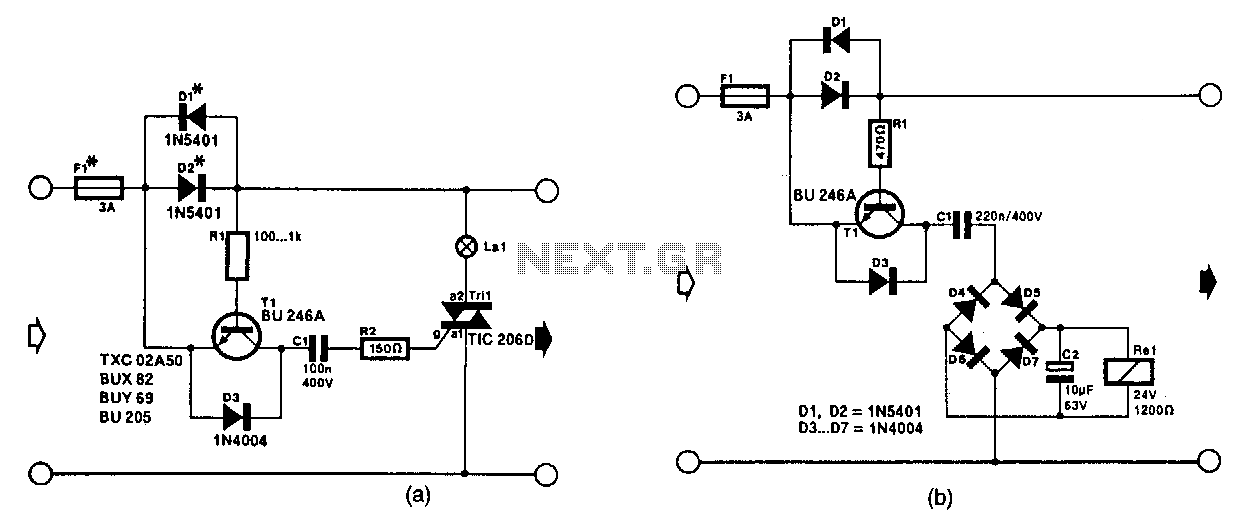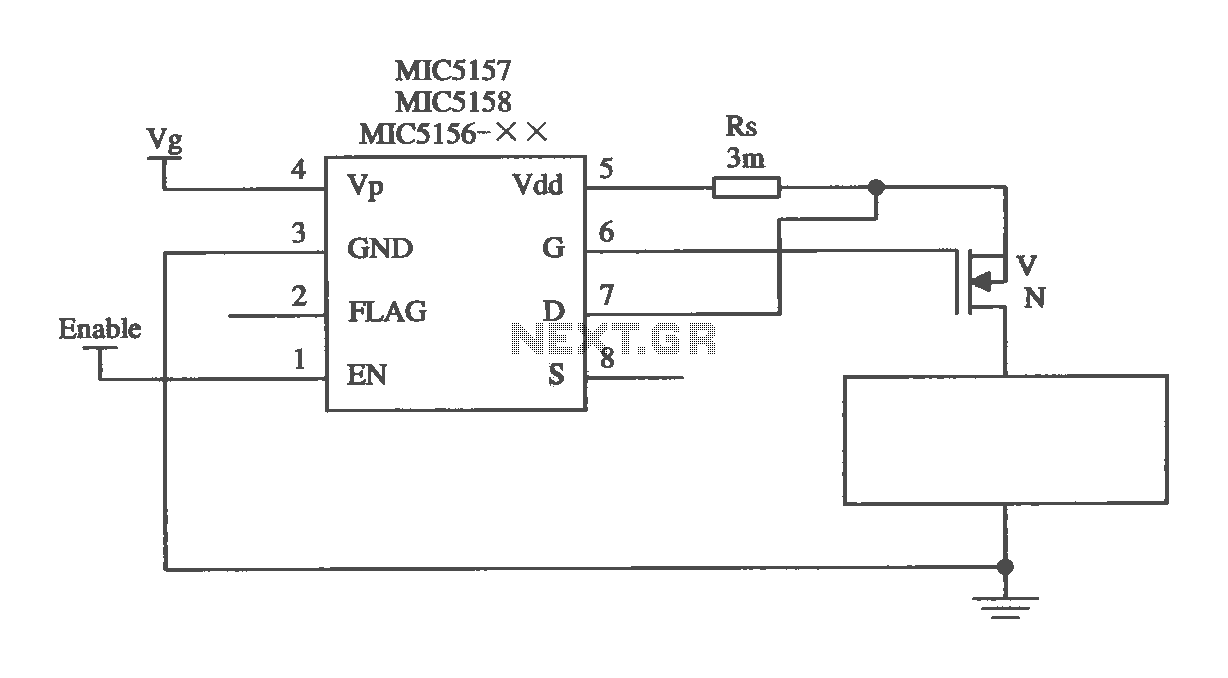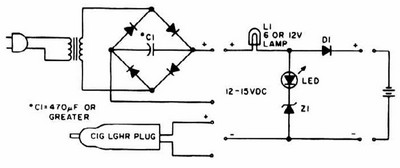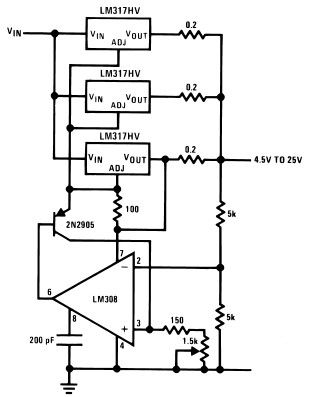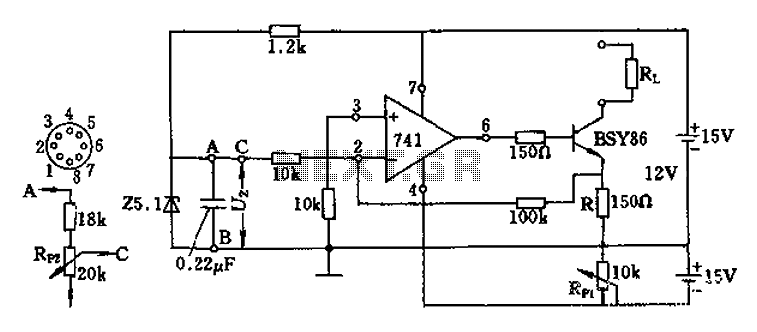
Voltage-Programmable Current Source
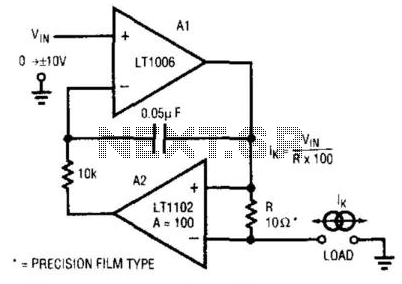
This circuit is a programmable current source that utilizes the LT1102 operational amplifier from Linear Technology Corp. in conjunction with the LT1006 operational amplifier. The first amplifier (A1), biased by a voltage source, drives current through a resistor (R) of 10 ohms and the connected load. The second amplifier (A2) senses this current and regulates A1. A 10-ohm resistor and a 0.05 µF capacitor are used to define the frequency response of the circuit.
This programmable current source circuit is designed for applications requiring precise current delivery. The LT1102 operational amplifier serves as the main driver, providing the necessary gain and output characteristics to control the current through the load effectively. The inclusion of the LT1006 operational amplifier enhances the circuit's performance by enabling accurate current sensing and feedback control.
A key feature of this circuit is its ability to maintain stable operation across a range of load conditions. The feedback loop created by A2 allows for real-time adjustments to the output current based on the sensed value, ensuring that the output remains consistent despite variations in load resistance.
The choice of a 10-ohm resistor in the feedback path is critical, as it directly influences the output current magnitude. The 0.05 µF capacitor, in combination with the resistor, establishes the frequency response, allowing the circuit to respond effectively to dynamic changes in the load. This configuration is particularly useful in applications such as sensor excitation, LED driving, and precision measurement systems where current stability is paramount.
Overall, the combination of the LT1102 and LT1006 operational amplifiers, along with the carefully selected passive components, results in a robust and versatile programmable current source suitable for various electronic applications. This, circuit is a programmable current source in which op amp LT1102 (Linear Technology Corp.) is used in conjunction with LT1006 op amp. Al, biased by V^, drives current through R (10 ) and the load. A2 senses this current and controls Al. The 10-1 resistor and 0.05-/iF capacitor sets the frequency response of the circuit.
This programmable current source circuit is designed for applications requiring precise current delivery. The LT1102 operational amplifier serves as the main driver, providing the necessary gain and output characteristics to control the current through the load effectively. The inclusion of the LT1006 operational amplifier enhances the circuit's performance by enabling accurate current sensing and feedback control.
A key feature of this circuit is its ability to maintain stable operation across a range of load conditions. The feedback loop created by A2 allows for real-time adjustments to the output current based on the sensed value, ensuring that the output remains consistent despite variations in load resistance.
The choice of a 10-ohm resistor in the feedback path is critical, as it directly influences the output current magnitude. The 0.05 µF capacitor, in combination with the resistor, establishes the frequency response, allowing the circuit to respond effectively to dynamic changes in the load. This configuration is particularly useful in applications such as sensor excitation, LED driving, and precision measurement systems where current stability is paramount.
Overall, the combination of the LT1102 and LT1006 operational amplifiers, along with the carefully selected passive components, results in a robust and versatile programmable current source suitable for various electronic applications. This, circuit is a programmable current source in which op amp LT1102 (Linear Technology Corp.) is used in conjunction with LT1006 op amp. Al, biased by V^, drives current through R (10 ) and the load. A2 senses this current and controls Al. The 10-1 resistor and 0.05-/iF capacitor sets the frequency response of the circuit.
